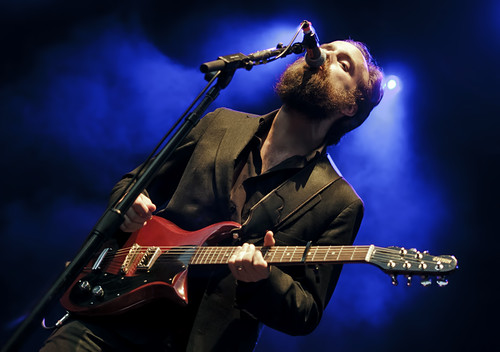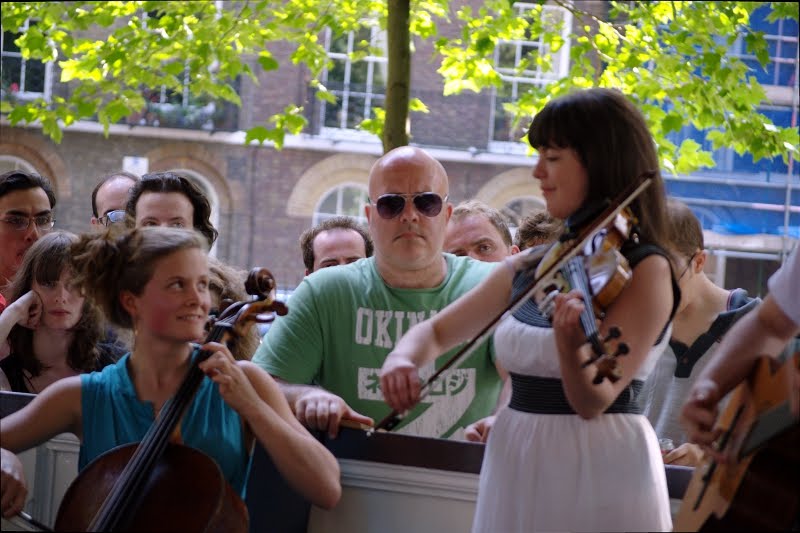I'm not a hugely social person in general, but when it comes to photography, I am probably more social than I otherwise am. I have a photobuddy I shoot a lot of gigs with, and I go on regular photowalks with up to 100 people at a time (which is a few too many people, I feel!). But also when it's not planned, you often find yourself interacting with other photographers, even if it's wordlessly. When you're shooting gigs on your own, you see the same old faces also there with their cameras, trying to get some good shots. You share a few words, you check out their photos on Flickr afterwards. I went to take pictures of the aftermath of the Clapham Junction riots a few months ago, and I was unsurprised to find that I was not the only photographer there. And of course, when you go to touristy places, whether it be the London Eye pretty much on my doorstep, or to far-flung countries, obviously photography is a large part of that experience... people want to remember what they've seen and done. In all of these photographer-interactions, one of the most frustrating things is camera envy!


Obviously, some of the equipment people have you can scornfully deride, but when you see Canon users walking around with their L glass, and Nikon users with their gold-banded 24-120mms, there's always that little twang of jealousy. At gigs, particularly, when you see photographers with their 70-200mm f/2.8 lenses, costing a grand or more, knowing that they're going to be getting pin-sharp images at large distances, it makes you a little ashamed to be screwing on your miniscule, plastic telephoto that cost a mere £300. What is infinitely worse is seeing people walking around on holiday with £5,000 of equipment around their necks taking photos of everything, non-stop. And what is infinitely worse than that is people walking around with £5,000 of equipment around their necks taking photos of buildings with the pop-up flash on. Arggg!
So what should we do in this situation, to ease the frustration? Three options spring to mind:
- Mug the unfortunate photographer for their equipment, and put it to use for the power of good (photography). This is unlikely to end well, even if you do disguise yourself as a disgruntled local.
- Claw pitifully at the photographer's leg, sobbing, asking them to have mercy on your £500 kit and give you a go of their pro glass.
- Of course, the only realistic option is to take the moral high ground, and remind yourself that excellent pictures can be taken on mediocre equipment. This is clearly true, as a quick search of Flickr will tell you (did you know that you can search Flickr by camera make and model?). Get to know your equipment like the back of your hand -- know where all the buttons and functions are, and what they do, get a feel for how it exposes, and how long it takes to respond to your press of the shutter release. Trust me, that will be more valuable to you than the camera around the other guy's neck. Of course, if you have the opportunity to upgrade your gear, go for it. Just remember that it's the photographer that makes the picture, not the equipment.


A couple of travel photos taken with mediocre equipment (standing next to people with $$$ gear)













